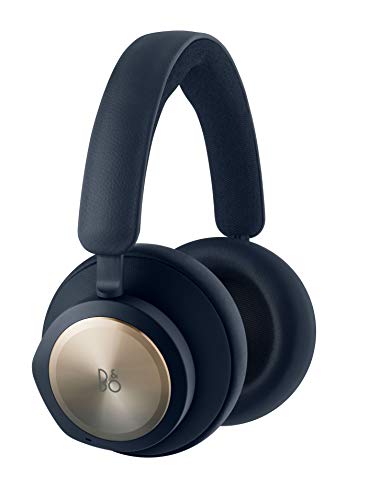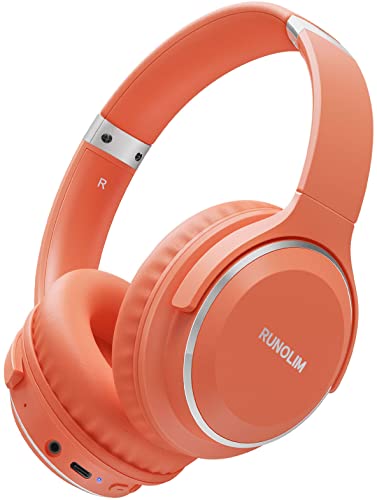12 Facts About Over Ear And On Ear Headphones To Make You Take A Look …
페이지 정보
작성자 Kara 날짜24-03-21 09:31 조회11회 댓글0건본문
 The Difference Between Over Ear and On Ear Headphones
The Difference Between Over Ear and On Ear HeadphonesOver-ear headphones protect your ears, which allows for larger drivers and room to truly deliver amazing sound. They are typically made for audiophiles, and can be expensive.
They typically fold down making them an ideal choice for traveling. They can also be a good fit for over ear headphones with noise Cancelling workouts since they aren't as hot and don't cause pressure on your ears as the majority of earbuds do.
Noise Cancellation
If you're going to spend a decent amount on headphones, you'll need them to have the best noise cancellation capabilities that you can get. Over-ear headphones are the best in this regard as they provide the perfect seal around your ears and block out most outside sound. However this also means they are typically heavier than headphones that are on-ear. This means they may be a little more difficult to carry in a small bag or backpack when traveling.
On-ear headphones are not ideal in terms of sound quality and noise cancellation because they don't seal tight around your ears. This allows some ambient noise to enter your space, but also gives you the opportunity to listen to more of what's happening around you.
Despite being the least transportable, over-ear headphones are generally the most effective quality of noise cancellation among the three most popular headphone models. This is due to their size, which allows them to have larger drivers that produce better audio quality. They are able produce the full range of frequencies with amazing clarity and detail. Over-ear headphones are preferred by professionals and audiophiles in the music industry.
Over-ear headphones are not only comfortable, but also provide the highest quality audio and comfort they are less likely to harm your hearing when worn for a long time. This is due to the fact that earbuds could cause ear wax to build up, which can affect your hearing. Over-ear headphones are much less likely to do this because they aren't as close to your eardrums.
Many of the over-ear headphones come with active noise cancellation technology, which helps to block out external sounds by producing different sound waves from the ones coming from your audio source. This is accomplished by series of microphones that are installed in the headphones. They are able to detect ambient sounds and then produce the opposite signal in order to eliminate them. This is contingent on how you listen to podcasts and music, and if you listen in public.
Sound Quality
Many audio enthusiasts believe that a great pair of headphones to be the most important piece technology. They allow us to listen to our favorite media and music in peace, and also to be able to shut out ourselves without disturbing others. There are a myriad of choices available today, ranging from basic earbuds to high-end monitors for sound musicians and engineers. The most popular headphone is the over-ear model.
The main benefit of headphones that are over-ear is their better sound quality, due to the bigger drivers that create a more expansive and immersive listening environment. Over-ear headphones are more comfortable than on the ear models since they completely cover the ears. This prevents heat build-up and decreases pressure over time, making them ideal for long listening sessions.
They can also cancel more background noise thanks to their larger earpads. This is a more efficient passive noise cancellation technique than on-ear or in-ear headphones. They're not perfect, and can still leak sound when used in public places or at work.
Over-ear headphones on the other hand can provide a stunning sound quality, even without active noise cancellation or Bluetooth. They offer an unbalanced and natural listening experience which can be customised through the equalizer feature of the headphone app or by selecting a preset.
Over-ear headphones have a wider bass response and a better soundstage than on-ear or in-ear models. They are also a good option for people who listen to a lot of dance or rock music because they reproduce bass with much more volume.
As the main headphone style for a majority of brands, over ear headphones are usually the first to be equipped with latest technology, including active noise cancellation and apps for companions. They also have a longer battery lifespan than on-ear or in-ear models because their larger earcups can fit larger batteries.
The best type of headphone for you will depend on your individual needs and preferences. For instance, if require a pair to work out or commute, on-ear and in-ear headphones are more comfortable than the Over Ear Headphones With Noise Cancelling-ear models. They are lighter and smaller, and can be folded to make space. On-ear models also offer more stability than over-ears when wearing a headset during physical activity. They also tend to have a better battery life and are able to be replaced if you accidentally damage them during your workout.
Comfort
Most people who wear headphones choose either the ones that rest on top of their ears or are placed over ear bose headphones them. Both choices have pros and cons with regards to comfort. For instance, headphones that are over-ear are a great choice for listening in loud environments as they allow listeners to block out noise from outside. However, they can create a certain degree of fatigue in the ears after long listening sessions. On the other hand, on-ear headphones do not put pressure on your ears as do over-ear models, but they also don't have the same isolation benefits. Nevertheless, many on-ear headphones come with different ear tips to help find a comfortable fit.
On-ear headphones can also be easily tucked away in a bag or backpack. They also have the advantage of being used with wireless and wired connections. Over-ear headphones on the other side, require more power to create a seal around the ears of the user. This can cause them to feel heavier on the head and neck after a while.
It's important to consider all of these aspects when deciding on which kind of headphones is best for you. Based on the type of media you listen to, the environment you're in, as well as your budget, you may want to opt for one style over another. Over-ear headphones generally perform better in terms of audio quality and support for ANC than on-ear headphones.
On-ear headphones are a great option for anyone looking to experience a balance between comfort and portability but is willing to pay a bit more for better sound. They're also a great option for those who commute and need to listen to music and podcasts on the go. On-ear headphones are more comfortable and lighter than their over-ear equivalents, and some fold for easy storage. However, they're not as user-friendly with mobile devices because their ear cups don't rest directly on the ear but instead on the back of the headband. If you don't secure the ear cups properly they may fall off and cause hot spots and pressure in your ears.
Portability
A great pair of headphones is the third important piece of personal technology you can own, right after your phone and your computer. The type of headphones you select whether they are earbuds, over-ear, in-ear, wireless, or true wireless, is dependent on your personal preference and your comfort. But the most important aspect when deciding on a new pair of headphones is your budget. The headphones you pick will determine the amount of sound and music you can enjoy. They also determine whether you're completely immersed in your surroundings and how long they can be worn.
In general, headphones that are on-ear offer better battery life than earbuds and over-ear models. The smaller earpads make headphones lighter, which decreases the amount of battery used. The majority of on-ear headphones can be folded to make them compact and easy to put in a backpack or briefcase. They also comfortably fit on your neck and head so you can wear them for longer durations without discomfort.
On-ear headphones are a good wireless over ear headphones choice if you are planning to use them in public places like offices or gyms, where you must be aware of the surroundings. They block out a lot of ambient sound, but they may leak a little more than other types of headphones. In contrast, over-ear headphones are a great choice for home or office use as they are less likely to leak, and they provide a more private listening experience.
Over-ear headphones are bigger in size, allowing for drivers that have better audio quality. They also provide more bass-driven sound. The extra space in the earcups allows them to have wider soundstages, more expansive soundstages and less harmonic distortion. These headphones are more expensive than on-ear models, but they offer a great value for audiophiles and music enthusiasts.
 Over-ear headphones tend to be a bit bulkier than on-ear versions and a lot of them don't come with a carry bag or foldable designs. Most over-ear headphones have a battery life of 40 hours or more on one charge. Some can even last longer if ANC disabled.
Over-ear headphones tend to be a bit bulkier than on-ear versions and a lot of them don't come with a carry bag or foldable designs. Most over-ear headphones have a battery life of 40 hours or more on one charge. Some can even last longer if ANC disabled.댓글목록
등록된 댓글이 없습니다.



















 광송무역
광송무역
 070-7762-8494
070-7762-8494

